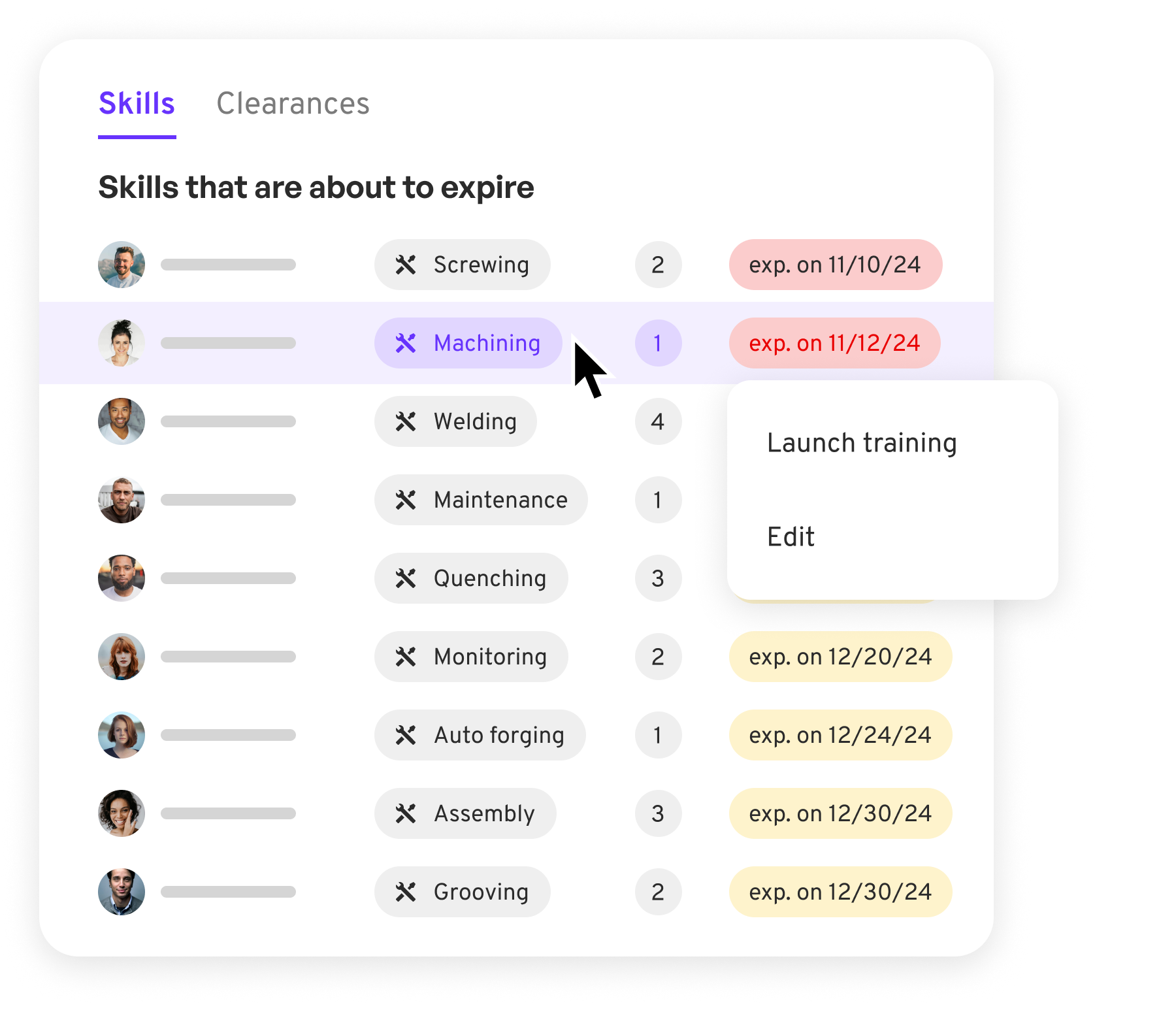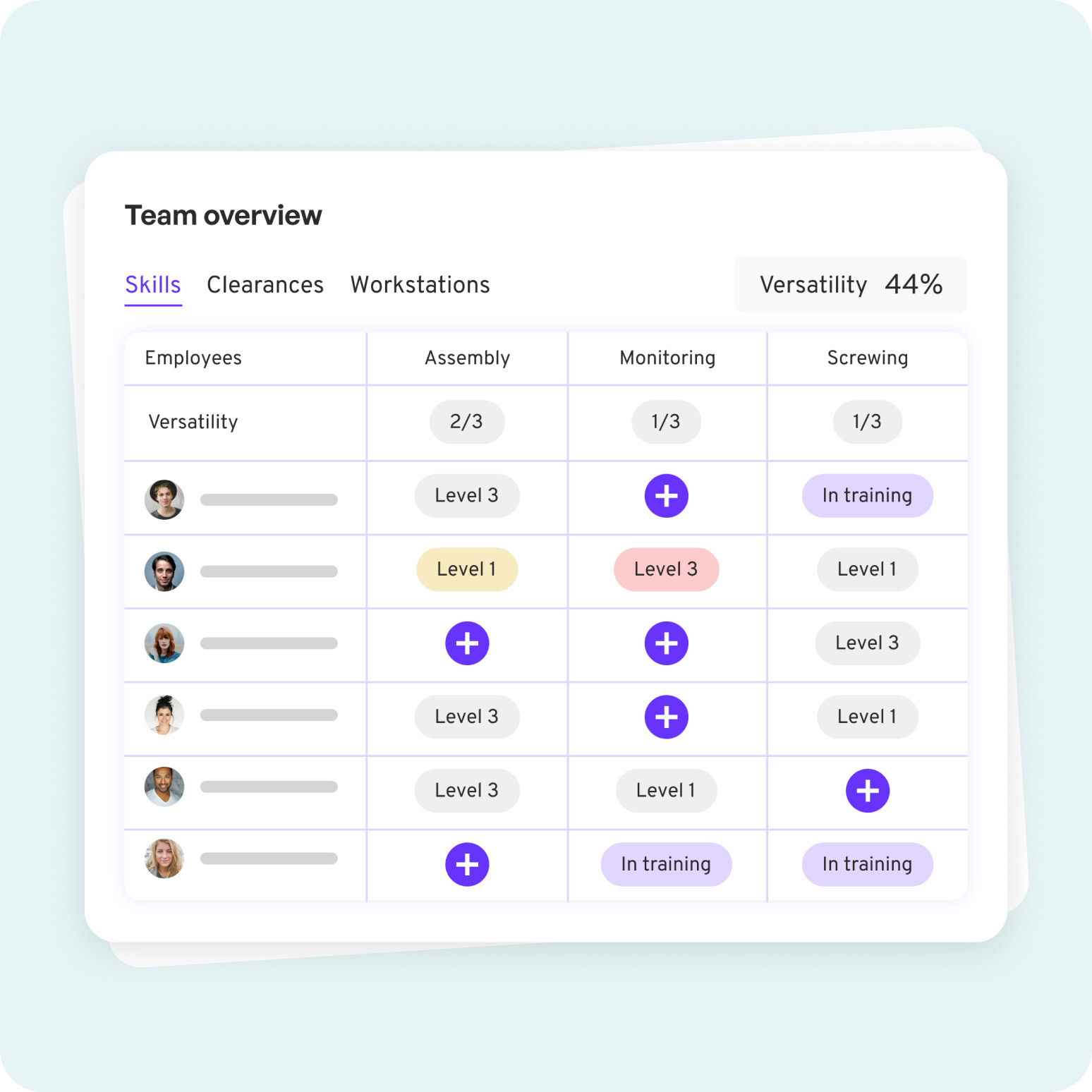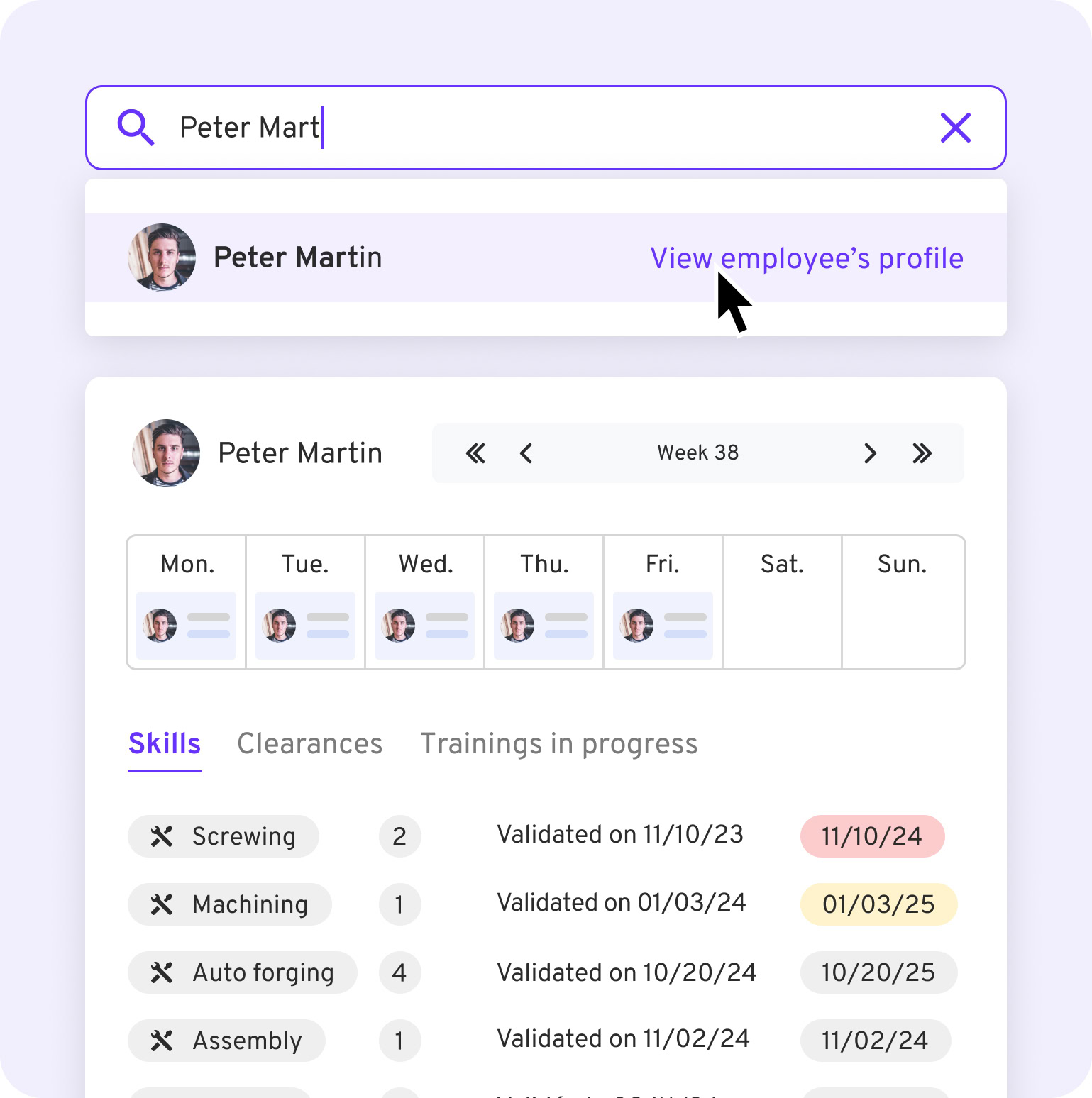Dynamic skills matrix
Request a demo

Data Standardization
Automatic update
Ease of use
Control yourand skills at risk
Monitor your team's versatility
Identify skills held by too few operators.
Manage your short- and long-term skill development objectives (GEPP)


Tackle your audits with complete peace of mind
Immediately track and trace acquired training, authorizations and skills.
Be alerted before a clearance expires
Access job assignment history
Ensure your productionteams' safety
Automatically assign employees to positions according to their skills and qualifications.
Easily organize your training courses and track their validation
Communicate instruction updates at the workstation and ensure they are taken into account

Customize the platform to suit your needs
Request a demo
What manufacturers like the most about Mercateam

Thanks to Mercateam, we've saved half a day a week by digitizing our management skills and centralizing all our data on a single platform.
Sylvain Willem
Industrial Director, Shiseido
Other Mercateamfeatures
Take back control of your production teams' skills
and organization now.
Request a demo